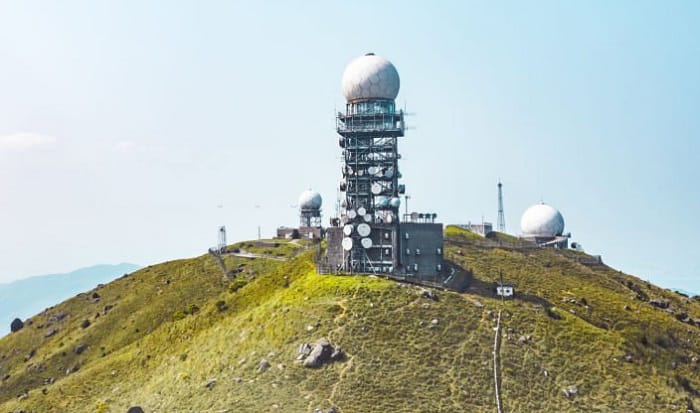To the uninitiated, the ionosphere may seem like a complicated and intimidating concept. Those who are familiar with radio communications, however, will know what it is, especially how it impacts a radio’s range.
In a nutshell, the ionosphere extends the range of radio transmissions. It absorbs or dampens radio signals, with their electrified ions reflecting radio waves.
So, how does the ionosphere affect the range of radio communications? Keep on reading and learn from the insights I will share.
Table of Contents
How Does the Ionosphere Affect the Range of Radio Communications?
The ionosphere influences radio propagation because of the high proportion of free electrons present.
When HF or high-frequency radio waves hit the ionosphere, they will vibrate the energy back. The radio waves bounce off this layer, moving back to the Earth. This makes the ionosphere important for facilitating long-range communications.
In an ideal path, radio waves are traveling in straight lines. With such, the curves of the Earth will inevitably limit the transmission range. This is where the ionosphere and radio waves enter the picture.
One of the most important ionosphere characteristics to note is that the concentration and distribution of ions are not uniform. They can vary depending on the time, as well as geometric storms and solar radiation. All these factors will affect ionosphere reflection and radio communication.
What is the Ionosphere?
For a better understanding of the impact of the ionosphere in radio communication, let us briefly discuss what it is and some of its characteristics.
The ionosphere is also known as the thermosphere. It is an active part of the atmosphere, which can grow or shrink, depending on the amount of energy it can absorb from the sun. The gasses in the ionosphere are triggered by electrically charged solar radiation that creates ions.
There are different layers of ionosphere. Technically speaking, however, these are not layers. They have free electrons and ionized molecules, which are peaks in their ionization levels.
The lowest layer of the ionosphere is the D layer. It has an altitude of 50 to 80 kilometers. The presence of this layer is apparent during the day, which is when the sun radiates.
Above the D layer is the E layer, which was the first layer of the ionosphere discovered. It is at an altitude of 100 to 125 kilometers. This is where ions and electrons quickly recombine.
Next is the F layer, which has the most critical role in long-distance radio communication. During the daytime, it splits into F1 and F1 and merges again at night.
FAQs
Does the ionosphere block radio waves?
No, the ionosphere does not block radio waves. It reflects it back to the surface.
The reflection of radio waves in the ionosphere results in sky wave propagation. When radio waves travel in the ionosphere, they pass through a medium from dense to less dense. After which, it bends away continuously until it reaches the Earth again.
How do radio waves behave in the ionosphere?
The behavior of radio waves in the ionosphere depends on their frequencies. Those with frequencies more than 30 MHz will usually penetrate.
On the other hand, those designated as high frequencies (above 30 MHz), will be reflected on the surface. The latter makes it possible to allow radio communication over long distances.
What important quality does the ionosphere have?
One of the most important qualities of the ionosphere relevant to this discussion is its ability to bounce radio signals that transmit from the earth. The ionosphere reflects radio waves. It is the reason why people can connect around the world through radio communications.
What is the effect of the ionosphere increasing its height at night?
During the daytime, the ionosphere becomes thicker and nearer to the Earth. Meanwhile, at night, it rises. The increase in its height results in a greater range of some radio frequencies, delivering a positive impact on long-range radio communication.
Which type of wave is not reflected by the ionosphere?
The low-frequency waves are not reflected in the ionosphere. They will escape into space. In contrast, high-frequency waves will reflect off the ionosphere and return to Earth.
Conclusion
This article talked about how does the ionosphere affect the range of radio communications. As mentioned above, when radio waves travel to the ionosphere, they reflect on the Earth’s surface. This is also what allows long-range communications, but this can highly depend on certain conditions affecting the ionosphere, such as whether it is day or night.

Hi, I am Amaro Frank – the Wind Up Radio’s content editor and writer. Working with Adam is so much fun, as his stories and experiences enrich my knowledge about radio communications and radio accessories. My main tasks in Wind Up Radio are building content and generating great articles on different topics around radio accessories.




